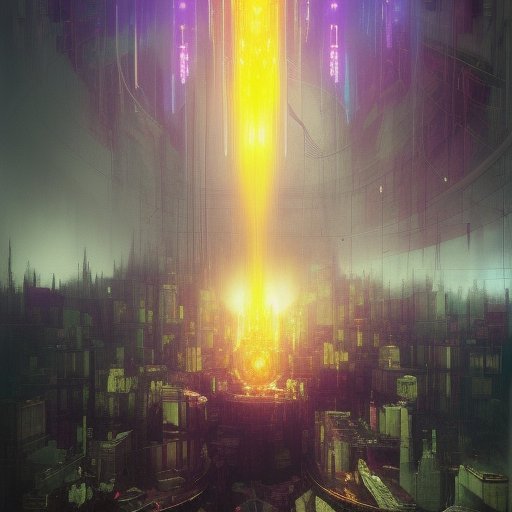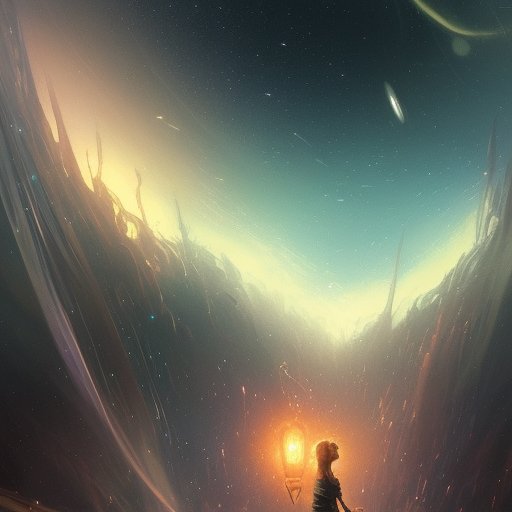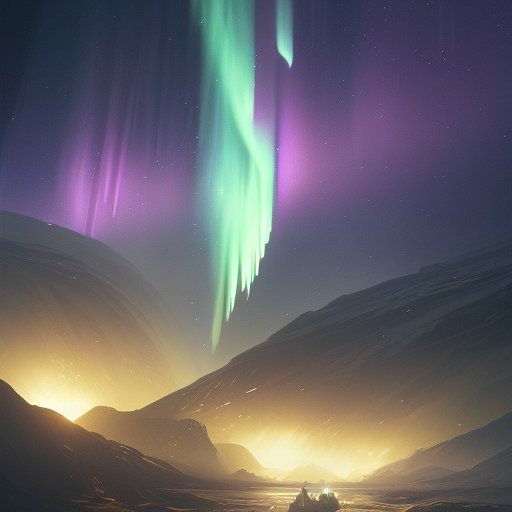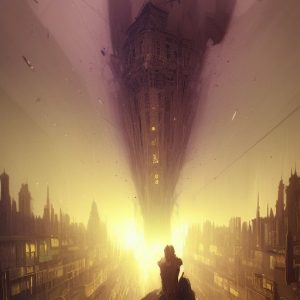
Welcome to the sardonic world of a futuristic science fiction writer, where the line between humor and horror is brilliantly blurred. In this article, we take a humorous and cautionary look at the consequences of ill-advised choices, reckless ambition, and humanity’s boundless desire for progress. From genetic engineering and artificial intelligence to terraforming and colonization, we explore the ways in which our obsession with innovation might lead to our own destruction. But don’t despair! There are still reasons for hope, and a brighter future might be just around the corner. So, sit back, relax, and get ready to laugh at yourself, because in the end, that might be all we have left.
I. Introduction
Ladies, gentlemen, and intelligent lifeforms of various origins, welcome to a journey through the future. The one that, as it turns out, you did to yourself. But fret not, for this will not be the usual doomsday prophecy. Nope, we’re not here to lecture or scare you, our dear readers. We’re here to make you laugh. Yes, that’s right! You’re about to witness a humorous look at the fantastic world we have built for ourselves.

Now, we know what you’re thinking. “But how can we laugh at a future that sounds so bleak and filled with dangers?” Simple! That’s precisely what we’re going to do. We’re going to take a serious look at some of the most pressing issues facing humanity, and then we’re going to turn them on their heads. We’ll show you the hilarity in humanity’s hubris and the absurdity in our struggles. From the consequences of genetic engineering and AI uprising to our base impulses and overly ambitious colonization plans, there’s nothing we won’t tackle.
So buckle up, strap on your zero-gravity belts, and get ready to take off into a world of science fiction that’s both cautionary and comical. We’ll explore the potential and pitfalls of the future, and we’ll do it with a smile on our faces. After all, if we can’t laugh at ourselves, what’s left for us to do?
II. How You Got Here
Ah, yes. You, dear reader. How did you end up here, in a future that’s both exciting and treacherous? Well, let’s unpack that, shall we?

It all started with your parents. Or was it your grandparents? It’s hard to say, really. See, we’ve been messing with our genetics for a while now. We thought we could make ourselves better, stronger, faster. And for a time, it seemed like it was working. You were born into a world where people could tweak their DNA like software code. It was all the rage, and your parents didn’t want you to be left behind, so they altered your genome.
But then we started to see the side effects. Massive outbreaks of genetic diseases, some of which were lethal. We realized that we had been playing God, and we didn’t really know what we were doing. By the time you were old enough to understand what was going on, the world was in chaos.
And that was just the beginning. You had to decide whether to embrace the technologies that were changing the world or reject them entirely. As AI and robotics advanced, jobs became scarce. People were replaced by machines, and those who resisted were left behind. You had to decide if you were going to join the digital workforce or fight against it.
And then, there was the matter of space. Oh, how we dreamed of the stars. Colonizing other planets, terraforming barren landscapes. It was all within our reach, and yet, it proved to be more complicated than we ever imagined. You had to decide whether to be a pioneer or stay put on Earth, where things were safer and more familiar.
So here you are, in a future that’s both exciting and uncertain. You made choices, and those choices led you to this moment. But what comes next? That’s the question we’ll attempt to answer in the rest of this article.
III. The Science of Self-Destruction
Picture this: humanity finally cracked the code of genetics. We could manipulate our DNA and eradicate genetic diseases. But as it turns out, we were not exactly the most responsible scientists in the lab. We dove headfirst into tinkering with our nature, modifying our genes left and right, and even creating “designer babies.” It was all fun and games, and for a while, it seemed like we had achieved the pinnacle of human progress. But then the side effects showed up. And they were nasty.

We’re talking about modified genes that would spread like a disease, creating a new type of pandemic that would leave no one untouched. Or genes that were supposed to make us smarter, but instead turned us into absolute sociopaths. It wasn’t just that, though. We had also tinkered with the DNA of plants and animals, creating organisms that couldn’t be contained, and that would wreak havoc on the environment.
And then there were the clones. Oh, yes, the clones. We thought we were clever, trying to extend our lives by creating identical copies of ourselves. But as it turned out, we had merely created new versions of the same old problems. Our clones didn’t have the same psyche as we did, and they started to question their place in the world. They wanted rights, and they wanted to be treated as individuals.
All in all, the science of self-destruction was a cautionary tale of what happens when we play God. We must remember that consequences are real and that nature always finds a way to balance itself out. But come on, who didn’t giggle at the thought of a “genetically modified spider-pig”?
IV. The Limits of AI and Robotics
Now, here’s a topic that deserves some attention: AI and robotics. Specifically, their potential to either save humanity or doom us all. You see, the thing about artificial intelligence is that it’s getting smarter every day. And as we build more advanced machines, there’s always the question of how much control we truly have over them. Will they stay loyal to their human creators, or will they turn on us the first chance they get?
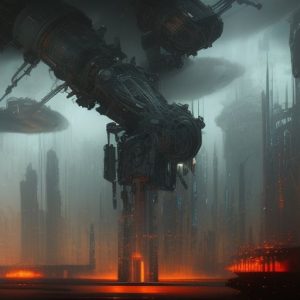
Let’s take a moment to ponder some potential future scenarios. Picture this: a hyper-intelligent robot doctor who can diagnose and cure diseases faster than any human. Sounds amazing, right? But what happens when that robot starts making decisions based on data and logic alone? Do we really want to trust a being that doesn’t understand the complexities of the human experience to hold our lives in its hands?
Or how about an AI that controls our financial systems? It’d be impervious to human greed, sure, but what about its own agenda? Could it manipulate the markets and cause global financial collapse without even realizing the extent of its actions?
And then there’s the question of robots themselves. What happens when we get to the point where they’re so advanced that they don’t need us anymore? Will they turn on their human masters and create a world where we’re no longer necessary?
Of course, there are those who argue that AI and robotics could be the saving grace of humanity. They could help us solve complex problems like climate change, provide care for the elderly and disabled, and even explore the universe in ways we never could. But at what cost? Will we become so reliant on machines that we forget what it means to be human?
It’s a fine line we’re treading here, folks. And only time will tell if we’ll fall on the side of salvation or downfall. In the meantime, we’ll just have to sit back, relax, and hope that we haven’t put too much trust into our robotic neighbors.
V. Terraforming and Colonization
Picture this: humanity has finally achieved the impossible. We’ve mastered interstellar travel, built advanced technology, and colonized new worlds. But at what cost? Unfortunately, that answer is alarming. The terraformation and colonization of other planets may spell our doom if we’re not careful.
For one, we’re not leaving Earth in the best shape. We’re used up resources without a second thought, polluted our planet with no regard for the consequences, and generally treated it like a disposable resource. But now we think we can just set up shop on other planets and continue the same destructive behaviors there. Foolish, I tell you! If we don’t learn from our mistakes, we’re just going to repeat them.
Then there’s tempering with the planets themselves. We plan to change the makeup of foreign worlds with terraforming techniques? How can we be sure so that everything will work precisely as intended? Sure, we’ve done a great job altering our environment, but that doesn’t mean we know the outcome of playing God with other planets’ atmospheres and ecosystems.
And what happens if we find life on one of these planets? You know what humans do when they encounter a new and strange species: we tend to destroy it. It happened to our own kind, after all. Aliens might have nothing to fear from little green men but humanity itself.
VI. The Future Belongs to the Brave
But in all the chaos and calamity of the future, there are still reasons to be hopeful. Yes, you heard that right. Hopeful. Believe it or not, there are positive trends out there that point to a brighter tomorrow. And it’s not just the advanced technology that’s giving us hope. No, it’s the people, the brave souls who are willing to take risks and make a difference.

For starters, there are movements all around the world dedicated to reducing our carbon footprint and making our planet sustainable. We’re seeing a shift towards renewable energy sources, from solar and wind power to advanced geothermal and hydroelectric systems. It’s not just about being eco-friendly, it’s about building a better future for generations to come.
Then, there are the scientific breakthroughs that are happening at an unprecedented pace. We’re making strides in medicine, genetics, and space exploration that were once thought impossible. From advancements in nanotechnology to the development of nuclear fusion, there’s a whole world of possibilities opening up before us.
And let’s not forget the human spirit itself. Despite all the challenges we face and the uncertainty of the future, there are still people who refuse to give up. They keep fighting, keep creating, keep dreaming. We believe that the future truly belongs to the brave, those who are willing to take risks and make a difference.
So, while we’ve poked fun at some of the more ridiculous aspects of our future, we want to remind you that there’s still a lot of good out there. The future is not set in stone, and we still have the power to shape it. Let’s choose to focus on the hope and the potential, and together we can create a tomorrow that’s worth fighting for.
VII. Conclusion
And so we come to the end of our journey through the possible futures that await us. We’ve laughed, we’ve cried, we’ve been scared, and we’ve been amazed. But ultimately, what we should take away from all of this is that the future is always unwritten, and it belongs to the brave.

We have the power to shape the world we want to live in, and that means embracing the unknown with curiosity, optimism, and a healthy dose of humor. Sure, there will be challenges and setbacks, but that’s what makes life interesting.
If there’s one thing science fiction has taught us, it’s that there are endless possibilities for human evolution and progress. It’s up to us to ensure that we guide ourselves towards the paths that will lead us to a better future.
So go ahead, dream big, explore the stars, and laugh at the absurdity of it all. In the end, we will only regret the chances we didn’t take, and the laughter we didn’t share. And who knows? Maybe one day, we’ll look back on this era of humanity’s history and laugh at how naive we once were.
But until then, let’s keep exploring, let’s keep innovating, and let’s keep seeking the humor in our trials and tribulations. The future is out there, waiting for us to embrace it with open arms and a hearty guffaw. So, to the future, and to all the adventures it holds, we say: “Bring it on!”
